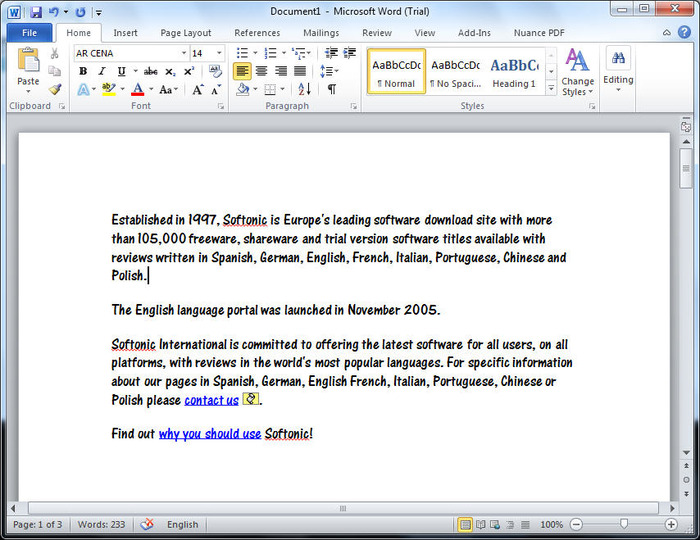
#Microsoft word free trial 2014 password#
The former has attracted 200 million users with a simple proposition: Everyone who enters a username and a password gets two gigabytes of cloud-based storage free.

If customers don’t clearly grasp what they would gain by upgrading, you will monetize fewer of them than you otherwise might.ĭropbox and LinkedIn are a study in contrasts. Do customers fully understand the premium offer?Ĭommunicating two sets of benefits complicates your marketing efforts. The balancing act can be tricky: Users may revolt when asked to pay for things they are accustomed to getting free. Start-ups should expect to do similar tweaking to find the optimal balance between traffic and paying customers. Over subsequent months the company realized it was still giving away too much and was getting too few subscribers as a result, so in 2012 it cut the number of free monthly articles to 10. After years of unrestricted access, in 2011 the paper began limiting users to 20 free articles a month people had to subscribe if they wanted to read more. This kind of tuning was evident at the New York Times website. If you’re generating lots of traffic but few people are paying to upgrade, you may have the opposite problem: Your free offerings are too rich, and it’s time to cut back. If you’re not succeeding with that goal, it probably means that your free offerings are not compelling enough and you need to provide more or better features free. Recall that one of the chief purposes of freemium is to attract new users. How do you know whether you’ve made the right choices? And if you suspect that you haven’t, what should you do? The Life Cycle of Upgrades Users who want the other 15 will have to pay. Let’s say you’ve created a digital product that has 20 features and you’ve chosen five that will be free to anyone who registers on your site. Through this work I’ve come up with six questions that start-ups considering a freemium model should ask. For several years I have studied freemium models in depth-by coauthoring (with my HBS colleagues Bharat Anand, Sunil Gupta, and Felix Oberholzer-Gee) a case on the New York Times’s paywall strategy (a variation of the freemium model) conducting a deep dive into the user data of a storage and synchronization company and coauthoring (with my HBS colleagues Clarence Lee and Sunil Gupta) a working paper on how freemium companies can use referrals to spur usage and upgrades. It has inherent challenges, as demonstrated by the many start-ups that have tried but failed to make it work.

And freemium is more successful than 30-day free trials or other limited-term offers, because customers have become wary of cumbersome cancellation processes and find indefinite free access more compelling.īut despite its popularity and clear benefits, freemium is still poorly understood. Social networks are powerful drivers: Many services offer incentives for referring friends (which is more appealing when the product is free). The monthly subscription fees typically charged are proving to be a more sustainable source of revenue than the advertising model prevalent among online firms in the early 2000s. Because free features are a potent marketing tool, the model allows a new venture to scale up and attract a user base without expending resources on costly ad campaigns or a traditional sales force. Several factors contribute to the appeal of a freemium strategy. It works for B2B companies as well-examples include Box, Splunk, and Yammer.
#Microsoft word free trial 2014 tv#
If you’ve networked on LinkedIn, shared files through Dropbox, watched TV shows through Hulu, or searched for a mate on Match, you’ve experienced the model firsthand.

Users get basic features at no cost and can access richer functionality for a subscription fee. Over the past decade “freemium”-a combination of “free” and “premium”-has become the dominant business model among internet start-ups and smartphone app developers.


 0 kommentar(er)
0 kommentar(er)
